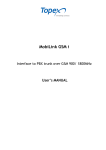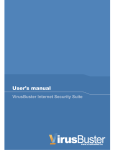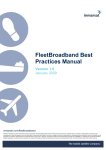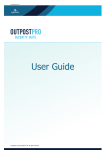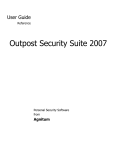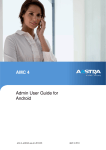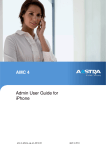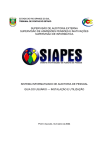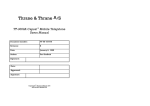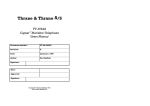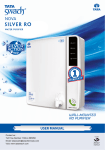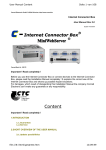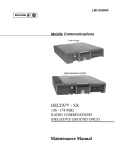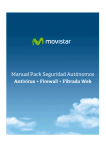Download Fleet 33 Services Applications Reference
Transcript
Inmarsat Confidential F33 Services and Applications Reference Manual Fleet F33 Services and Applications Reference Manual Issue 2.1 March 2004 Disclaimer This document is for the exclusive use of the recipient to whom it is addressed and the recipient shall not permit this document to be distributed to any third party at any time. Recipients are responsible for making their own decision as to the completeness, fairness or accuracy of the information and any opinions contained in this document and must rely on their own judgement in relation thereto. So far as Inmarsat is aware, the information contained in this document is true and accurate. However, no representation or warranty, express or implied, is or will be made by Inmarsat and no responsibility is or will be accepted by Inmarsat as to the accuracy or completeness of the document. For further information or clarification please contact Chris Insall on: [email protected] Contributor: Ian C Lewis [email protected] Copyright © Inmarsat 2003 Page 1 of 51 Issue 2.1 Inmarsat Confidential F33 Services and Applications Reference Manual Table of Contents 1. INTRODUCTION TO THE INMARSAT FLEET F33 ....................................4 1.1 4.8KBPS VOICE .................................................................................................5 1.2 9.6KBPS GROUP 3 FAX......................................................................................5 1.3 9.6KBPS ASYNCHRONOUS DATA .......................................................................5 1.4 MOBILE PACKET DATA SERVICE (MPDS) ........................................................5 1.5 FLEET 33 EQUIPMENT EXAMPLES .....................................................................6 2. OVERVIEW OF THE INMARSAT FLEET F33 SYSTEM ............................7 2.1 POSITIONING OF INMARSAT F33........................................................................7 2.2 F33 COVERAGE MAP.........................................................................................9 2.3 HOW TO CALL VIA F33....................................................................................10 2.4 HOW F33 CALLS ARE CHARGED ......................................................................11 2.5 INMARSAT MOBILE PACKET DATA SERVICE (MPDS).....................................12 2.5.1 MPDS charging ......................................................................................13 2.5.2 Call Waiting ...........................................................................................13 (optional – requires participating hardware and airtime provider) .......................13 3. INMARSAT F33 SOLUTIONS .........................................................................15 3.1 INTERFACING WITH PHONES, FAXES AND MODEMS ..........................................15 3.2 SHIP-TO-SHIP COMMUNICATIONS ....................................................................15 3.3 WORLD-WIDE-WEB (WWW) ACCESS............................................................16 3.3.1 Typical F33 WEB applications ..............................................................16 3.4 NAVIGATIONAL CHART UPDATES (C-MAP) .....................................................17 3.5 DIGITAL NAVIGATIONAL CHARTS FROM THE UK HYDROGRAPHIC OFFICE .....18 3.6 NOWCASTING .................................................................................................19 3.7 OCEANOGRAPHY AND FISHING STRATEGY (CATSAT)....................................20 3.8 EMAIL VIA F33 ...............................................................................................21 3.9 SPECIALISED EMAIL SERVICES .........................................................................22 3.10 UNIVERSAL MESSAGING VIA F33................................................................23 3.11 SMS MESSAGING WITH SMSPOP ...............................................................24 3.12 USING THE 9.6KBPS ASYNCHRONOUS DATA SERVICE...................................25 3.12.1 Integrated V42bis and V44 compression (optional service – participating hardware and airtime providers only) ...................................................................26 3.13 VESSEL SECURITY MONITORING AND TELEMETRY .......................................26 3.15 SLOW-SCAN VIDEO VIA F33.........................................................................27 3.16 CREW CALLING (WELFARE) VIA F33............................................................29 3.17 FILE TRANSFER (FTP) .................................................................................31 3.18 FACSIMILE VIA F33 .....................................................................................32 3.19 TELEX .........................................................................................................33 4. GETTING STARTED WITH A NEW F33......................................................34 4.1 SERVICE ACTIVATION .....................................................................................34 4.2 FINANCIAL - ACCOUNTING AUTHORITIES & ISPS ...........................................34 4.3 INMARSAT F33 MES NUMBERING..................................................................35 INSTALLATION AND APPLICATION TESTING......................................................35 4.5 5. APPENDICES .....................................................................................................37 5.1 HOW THE INMARSAT NETWORK WORKS ..........................................................37 5.2 HOW TO SET UP MPDS DIAL-UP NETWORKING ...............................................38 Copyright © Inmarsat 2003 Page 2 of 51 Issue 2.1 Inmarsat Confidential 5.3 5.4 5.5 F33 Services and Applications Reference Manual MPDS VIA F33 – RECOMMENDATIONS & THINGS TO AVOID ..........................45 HOW TO OPTIMIZE OUTLOOK EXPRESS EMAIL FOR F33.................................47 LIST OF ACRONYMS ........................................................................................51 Copyright © Inmarsat 2003 Page 3 of 51 Issue 2.1 Inmarsat Confidential F33 Services and Applications Reference Manual Purpose The aim of this reference manual is to increase the level of awareness in the Inmarsat Fleet market and in particular to promote and thus share the benefits of the many Inmarsat Fleet applications amongst existing Inmarsat agents, system integrators, distributors, service providers and manufacturers. For documentation on specific equipment, please refer to the manufacturers own user manuals. This manual is intended to give a good overview of the many applications that are suitable via F33 and show how these can be of benefit to the maritime user, rather than a detailed ‘how-to’ guide. Visit http://www.inmarsat.com/fleet/ for the Fleet home site. 1. Introduction to the Inmarsat Fleet F33 In response to the ever-increasing need for data-driven, cost-effective communications at sea, Inmarsat has developed the unique new service family called Fleet, which provides fully integrated satellite communications services incorporating voice and data applications. The newest member is the Fleet F33. As well as the global 4.8kbps AMBE voice service and new (optional) 9.6kbps fax and async’ data services, F33 also offers the new (optional) Mobile Packet Data Service (MPDS). The principal F33 services and MES interfaces are summarised below: Fleet 33 Service (-12.5dB/k antenna) Global 4.8kbps AMBE voice / DTMF (mandatory) Mobile Earth Station (MES) interface Via the handset(s) & RJ-11 analogue, 2-wire (and ISDN bus up to 100m) Spot beam 9.6kbps G-3 facsimile (optional) RJ-11, via FIU two wire analogue Spot beam 9.6kbps async data (optional) RS-232 Spot beam MPDS (optional) RS-232 (also RS-422 & USB port) Additional ports may also be available such as supplementary ports for user-supplied handsets, USB for data and local user MES configuration via a PC etc. Note that F33 mobiles are available in three variants as summarised below: 1 2 3 Fleet 33 Service Variants Global 4.8kbps AMBE voice and spot beam 9.6kbps async data Global 4.8kbps AMBE voice and spot beam MPDS Global 4.8kbps AMBE voice and spot beam 9.6kbps async data and spot beam MPDS NOTE: Other than mandatory services, the extent to which these services are implemented by Land Earth Station Operators (LESOs) and equipment manufacturers may vary. Copyright © Inmarsat 2003 Page 4 of 51 Issue 2.1 Inmarsat Confidential F33 Services and Applications Reference Manual 1.1 4.8kbps Voice On Fleet F33, 4.8kbps voice is the default voice telephony service. This is also known as the AMBE voice where ‘Advanced Multi-Band Excitation’ (AMBE) is the technique used to compress the human speech waveform. The service is typically available through the system handset but is also available through additional user-provided handsets (connected to an analogue RJ-11 port on the MES). 1.2 9.6kbps Group 3 Fax An F33 MES can, as an option, now also support a spot-beam 9.6Kbps Fax service, similar to that provided with Inmarsat B. This represents a highly cost-effective means of sending fax via Fleet F33. The service is provided via the ITU Group 3 Fax Interface Unit (FIU) within the MES though an RJ11 connector on the MES. Consult your MES supplier for recommended fax machines as fax machine performance varies in practice. 1.3 9.6kbps Asynchronous Data F33 MES can also now, as an optional service, support the spot-beam 9.6kbps Inm-B asynchronous data service. If it is provided, it is via the RS-232 port on the MES. This service emulates a Hayescompatible modem and accepts call dial-out and set-up with the traditional AT-command set. See 3.12 Using the 9.6kbps asynchronous data service. 1.4 Mobile Packet Data Service (MPDS) The MPDS service is an ‘always-on’ connection to the Internet. It operates within the spot-beams via a packet-switched, 64kbps shared access channel. The service is suitable for a wide range of IPbased applications such as company LAN access, WWW Internet browsing, on-line navigational chart updates, on-line weather reports and of course email. It is accessed either via the RS-232 port on the MES or via the USB port. The Fleet F33 service will have the MPDS service added in 2004, and F33 MESs already installed will be upgradeable on-board to the MPDS service through a straightforward software upgrade. The illustration below shows a general overview of the F33 system onboard. It also explains the use of the terms of ‘Above Decks’ and ‘Below Decks’ in the maritime environment: Copyright © Inmarsat 2003 Page 5 of 51 Issue 2.1 Inmarsat Confidential F33 Services and Applications Reference Manual 1.5 Fleet 33 Equipment Examples From Nera The F33 Below and Above Decks Equipment (BDE/ADE) from Nera is shown below: ON/OFF SIM CARD 20-32 VDC / 110W NOT IN USE RF (50 TERM) SIM CARD INSIDE WHEN CHANGING MODEM UNIT REMOVE COVER AND TAKE OUT SIM CARD User guides and installation guides can be downloaded from Nera at http://www.nera.no/. For additional detailed Nera equipment information see ftp://ftp.nera.no/mesbbs/index.htm. Copyright © Inmarsat 2003 Page 6 of 51 Issue 2.1 Inmarsat Confidential F33 Services and Applications Reference Manual From Thrane and Thrane The Thrane and Thrane F33 terminal is displayed below: 2. Overview of the Inmarsat Fleet F33 system In addition to merchant, energy and government users, Inmarsat F33 is designed specifically to meet the needs of smaller and medium-sized motor and sailing yachts and to cost-effectively meet the needs of other maritime users on smaller vessels such as fishing. This section provides an overview of F33 including the relative market position, geographical coverage, how the Inmarsat network behind F33 routes and connects calls and how different calls are billed. 2.1 Positioning of Inmarsat F33 Inmarsat F33 will be of greatest benefit to maritime users who require global maritime voice service and need to access the Internet from within the extensive Inmarsat spot beam areas. Typically they Copyright © Inmarsat 2003 Page 7 of 51 Issue 2.1 Inmarsat Confidential F33 Services and Applications Reference Manual will not have the need for ISDN-type applications. The figure below shows how Fleet F33 is positioned against the other Inmarsat Fleet services within the relevant maritime markets: F33 F55 Government Vessel demand for Data, Global Voice Fishing Leisure F77 Merchant Vessel Size The key features of the Inmarsat F33 service that make it ideal for the coastal / offshore vessel / yacht market are: • Global coverage voice service • Small size, reduced weight and lower cost • Ease of installation • Wide area regional 9.6kbps fax and data service (spot beam) • Wide area regional ‘always-on’ access to the Internet via MPDS (spot beam) Copyright © Inmarsat 2003 Page 8 of 51 Issue 2.1 Inmarsat Confidential F33 Services and Applications Reference Manual 2.2 F33 Coverage map Copyright © Inmarsat 2003 Page 9 of 51 Issue 2.1 Inmarsat Confidential F33 Services and Applications Reference Manual 2.3 How to call via F33 Fixed-to-Mobile Dialling Voice, data and fax calls to an Inmarsat F33 terminal, are made in exactly the same manner as a normal international IDD call. Note that in most countries the PSTN will route automatically to a predefined LES. (In some cases the LES may not yet support the F33 service, - the fixed caller should check with their tele-comms provider.) The number format is: <International access code> <Ocean Region code> <Inmarsat Mobile Number (IMN)> The Inmarsat Global Ocean Region Code (SNAC) is 870. There may be some LESs, however, where the Ocean Region Code has to be manually selected as follows: Atlantic Ocean Region-East Pacific Ocean Region Indian Ocean Region Atlantic Ocean Region-West 871 872 873 874 The remaining Inmarsat Mobile Number (IMN) dialled is of the form: 7 6 X1X2X3X4X5X6X7 The IMN will either be that associated with the hardware ID or the SIM card currently in the F33. Mobile-to-Fixed dialling Prior to dialling the destination PSTN number the following need to be checked: • • • LES to be used - ensure that the selected LES is capable of handling Inmarsat F33 F33 MES port to use Is the vessel within global or spot beam coverage – this affects service availability. The procedures for checking and setting these parameters are given in the manufacturers Operating Guide for each MES. Once these have been checked the call is dialled as follows: <00> <Destination Country Code> <PSTN number > <#> The Mobile Earth Station (MES) operator makes the selection of the LES by either using the default LES programmed into the MES for each Ocean Region or by entering the LES code in the dialling string for a particular call in accordance with the MES manufacturers instructions. The LES operator using its own national or international routing arrangements carries out terrestrial routing of the call to its final destination. Some F33 applications, such as LAN bridge/routers and File Transfer Systems, are capable of automatic dialling in which case the above dialling string can be programmed into the equipment in accordance with the manufacturers instructions. Mobile-to-Mobile Dialling Mobile-to-Mobile calling is also possible with F33. There is of course twice the end-to-end delay because of the double satellite hop, which is likely to reduce the throughput and performance of many user applications. Also note that the cost is twice as high as a mobile-to-fixed call as there is twice the space segment (satellite) usage. Copyright © Inmarsat 2003 Page 10 of 51 Issue 2.1 Inmarsat Confidential F33 Services and Applications Reference Manual 2.4 How F33 calls are charged F33 voice, fax and data calls via Inmarsat can be made either from the mobile satellite terminal (mobile-to-fixed calling) or from a terrestrial telephone line (fixed-to-mobile calling). The point of origination of the call (i.e. from the satellite terminal or from a terrestrial line) determines the manner in which the call is routed and billed. Mobile-to-Fixed and Mobile-to-Mobile charging When a call is made from an F33 terminal the call charge is composed of two elements, the satellite portion comprising the call from the MES to the LES via one of the Inmarsat satellites and the terrestrial portion (or back-haul), which is the delivery of the call from the LES to the final PSTN destination. An MES user can make a call using any LES within the Ocean Region of operation that supports the Inmarsat service required. However, different LESs will have different tariffs, usually structured as charge-bands based on the destination called, and it makes good business sense to ask your AA or ISP for the most relevant tariff system for your vessel. The Accounting Authority (AA) or ISP usually bills F33 calls made in the mobile-fixed and mobileto-mobile direction in the same manner as other Inmarsat maritime services are billed. Charging to a SIM card If a SIM card is used, the SIM owner (of the particular SIM ID) will be billed for any from-mobile call charges. This includes packet data charges via MPDS. This facility allows several users to use an F33 terminal but be billed separately for their usage. The different mobile numbers (IMNs) are also only active when the appropriate SIM card is in use. This could be a useful feature for yacht charters, where owner costs need to be separated from charter users’ costs. Fixed-mobile charging Call charges for fixed subscriber originated calls are set by the telephone service provider or PTT and cannot be influenced by the subscriber. However, in countries where the telecommunications service has been deregulated there will normally be a choice of telephone service providers thus enabling a fixed subscriber to have a choice of tariffs. Many LESs and service providers have also introduced two-stage dialling methods to by-pass the default national PTT routing agreements, and will have separate billing arrangements (and often more cost effective call charges) for the Inmarsat portion of the call. Otherwise the telephone service provider / PTT bills calls made in the fixedmobile direction. Copyright © Inmarsat 2003 Page 11 of 51 Issue 2.1 Inmarsat Confidential F33 Services and Applications Reference Manual 2.5 Inmarsat Mobile Packet Data Service (MPDS) The nature of the Internet means that, for the majority of the time for which you are connected to a WEB site by your F33 mobile, for example, there is very little information being passed via the satellite. There is a burst of activity when they first display each page, but while you are reading through the information on the screen, no more information is being sent or received. What is needed is a system whereby you are charged for the amount of information that you send and receive via the satellite, not how long you are connected. You can now take your time reading through information; and however long it takes to read the WEB pages, it is costing you nothing. Such a system has been provided for F33 using the Inmarsat Mobile Packet Data service (MPDS). This is very similar to the terrestrial GSM packet data system GPRS. MPDS has been developed to provide a way of delivering mobile packet data via satellite, which is more efficient and flexible than circuit-switched data channels. With circuit-switched data connections like the 9.6kbps data service (also available on F33), the customer is charged for the time for which they remain connected, regardless of how much data they transfer. The key benefit of MPDS is that the customer only pays for the amount of information that is sent & received over the network. This allows the customer to work in exactly the same way regardless of whether they are in the office or mobile. Because of the ‘dead time’ in accessing the Internet, the MPDS service can provide significant cost savings to F33 users. Mobile Packet Data works by allowing mobile users, covered by the same satellite spot beam, to share the channels available in that spot beam. As more users connect, they too are shared amongst the available channels. Given that the bandwidth of each to-mobile MPDS channel is fixed at 64 kbps, this means that the bandwidth available to each user is reduced when further users connect. Therefore, the mobile users may be aware that the speed of the service is slowing down. However, Inmarsat systems monitor the MPDS channels to ensure they operate at optimum loading, and add further channels to the spot beam to maintain a service that is fit for purpose. During quiet periods, e.g. when a user is reading a web page or typing an email, the channels are free to be used by other mobiles. This is because only short maintenance bursts are sent to keep the network informed of the mobile’s status. The initial Mobile Packet Data service will be operated on a ‘best efforts’ or undefined bit rate (UBR) basis. This means the bandwidth available to an individual mobile may vary depending on the activity of other mobiles, but could be as much as 64kbps. The return rate from an F33 mobile to the Internet is restricted to 28kbps. In addition Inmarsat will add more channels as the traffic grows. As mentioned previously, the MDPS service for F33 will be added in 2004. F33 MESs already installed will be upgradeable on-board to the MPDS service through a simple software upgrade. For detailed guidance on setting up your MPDS service see 5.2 How to set up MPDS dial-up networking. Copyright © Inmarsat 2003 Page 12 of 51 Issue 2.1 Inmarsat Confidential F33 Services and Applications Reference Manual 2.5.1 MPDS charging There are a small number of software applications that make up the majority of all F33 mobile data use. • Internet access • Email • Document or File transfer • Accessing a local area network or corporate intranet At any point in time, each of these applications uses different amounts of bandwidth on the network, depending on what it is doing. Most of them use less than half of the available full-duplex bandwidth at any given time. It therefore follows that on a circuit switched service the user would be paying for, but not using, 100% of the channel. Using Inmarsat MPDS the F33 owner (or SIM card owner) will pay for just the data that is transmitted or received over the network. The chart below shows how communication costs accumulate over time with typical use for MPDS vs. circuit-switched services. Circuit-switched vs. MPDS cost comparison Note that MPDS connections can only be set-up from mobile. 2.5.2 Call Waiting (optional – requires participating hardware and airtime provider) The call-waiting service optionally available on the Inmarsat Fleet system allows the presence of incoming voice, fax or data call to be notified to a MES user who is busy in an Internet session through MPDS. Normally, when a user is on-line on MPDS, such calls can be missed as the satellite terminal is busy. However with the call-waiting service, incoming calls are no longer missed, thereby allowing the ‘always-on’ nature of the MPDS service to be used to the full. Copyright © Inmarsat 2003 Page 13 of 51 Issue 2.1 Inmarsat Confidential F33 Services and Applications Reference Manual When the call-waiting alert is received, the user will have the choice of whether to accept the incoming call or not. To aid this decision, the display on the main MES handset will indicate the type of incoming call together with the caller ID number if available. To answer incoming voice calls, the user can simply pick up the phone as normal. The MPDS session will be automatically disconnected by the phone and the incoming call set-up. However, if the user decides not to accept the incoming call (either by explicitly rejecting the call alert or letting the call ringing time-out) then the MPDS session is left connected and unaltered. The advantages of call waiting are: • Ability to remain connected to MPDS for prolonged periods, taking advantage of the ‘always-on’ nature of the connection. • Peace of mind when on-line, that incoming calls are not being missed. • Possibility to be notified of incoming fax and data calls, as well as voice calls. • See who is calling (optional) • Avoids the cost of additional satellite phone-lines to remain contactable. To further increase the flexibility of call waiting, the following enhancements to the call-waiting service may be offered by the Land Earth Station Operator (LESO): i) The ability for the user at the start of a MPDS session to select whether to be notified of a call-waiting alert. In this way, the user may decide not to be interrupted for any important on-line MPDS sessions. ii) Availability of a software application running on the ship’s PC being used for the MPDS internet session to alert the presence of incoming call. Such a feature will be useful when the PC is located some distance away from main MES handset. Here a standard analogue phone connected to the MES could be used accept an incoming voice call. iii) Forwarding of the call to a LESO’s voicemail service. The user can then pickup the voicemail at a later time when convenient. A message played for incoming voice calls to encourage the calling party to remain connected while the call notification is being issued. This will allow a short time interval to be available for users to save any on-line work before taking the call. Copyright © Inmarsat 2003 Page 14 of 51 Issue 2.1 Inmarsat Confidential F33 Services and Applications Reference Manual 3. Inmarsat F33 Solutions In this section some of the key applications of most interest to F33 users are discussed. 3.1 Interfacing with phones, faxes and modems The F33 global voice service The F33 MES provides a digitised voice channel to the user, which is accessed via the analogue RJ11 port. For normal telephony use, this emulates the local exchange line conditions such as 600-ohm impedance, ‘battery voltage’ of approx 40 VDC, dial tone and ring current. Remember when dialling from-mobile via an analogue port on the F33 to always terminate the dialling string with a ‘#’ symbol. Digital Enhanced Cordless Tele-comms (DECT) DECT is likely to provide good performance in fibreglass vessels such as yachts. Any Inmarsat F33 MES may be used with a DECT telephone system although it will require an external base station to be connected to the voice port on the unit. With the external DECT base station connected to the MES using the appropriate RJ-11 connector. V-series modems With the 9.6kbps asynchronous data service, the F33 MES effectively emulates a standard Hayes modem. To call a V-series modem on the PSTN, just dial through the MES’ RS232 ports with the usual ATD command(s). Incoming data calls can be auto-answered if necessary. See section 3.12 Using the 9.6kbps asynchronous data service. (Voice-band-data signals are not supported via F33. This is because the two-wire RJ-11 interface provides a compressed voice channel, which does not support a modem carrier signal.) 3.2 Ship-to-ship communications Ship-to-ship communications via F33 will typically be via the 4.8kbps AMBE voice service, dialled as a mobile-to-mobile call. Useful directory information is available on-line directly from the Inmarsat website on vessel identities and contact numbers. Visit http://www.inmarsat.com/ship_directory.cfm for this unique service. Copyright © Inmarsat 2003 Page 15 of 51 Issue 2.1 Inmarsat Confidential F33 Services and Applications Reference Manual 3.3 World-Wide-Web (WWW) access Perhaps one of the most popular data applications on F33 is access to the Internet. A vast quantity of information useful to mariners is available via the World-Wide Web. This is readable with standard browser software either bundled with all popular operating systems (Internet Explorer- IE) or other vendors (Netscape Navigator). The principal way Internet access will be arranged through an F33 terminal will be using a specially configured dial-up-networking session via MPDS. Remember that MPDS on F33 works in the spot beams only. For instructions on how to set up MPDS dial-upnetworking see 5.2 How to set up MPDS dial-up networking. MPDS enables a PC running a standard operating system such as Windows 2000 to connect to the Internet via an F33 terminal. At the Land Earth Station (LES) side there is a direct connection to the public Internet as shown in the overview diagram below: World-Wide Web (WWW) access via F33 3.3.1 Typical F33 WEB applications The most popular WEB applications on F33 are likely to be straightforward Internet access for information retrieval, communications with ports and ships supplies, news & current affairs, chart updates, weather forecasts, WEBmail and online banking. Several WEB sites are tailored to maritime users for example http://www.missiontoseafarers.org/ and http://www.merchantnavy.com/. They offer ‘fast site’ options with reduced graphical content to speed up the access via satellite and reduce the cost of a WEB access session. WEBmail is a service offered by many Internet ISPs in addition to the usual email server supporting the standard POP3 protocols. WEBmail allows email customers to receive, read, compose and send emails with their usual SMTP address when they only have access to a WEB browser and an Internet connection. Some WEBmail services support attachments others do not. Another classic application of on-line Internet access is to update your ship’s PC virus protection software. Copyright © Inmarsat 2003 Page 16 of 51 Issue 2.1 Inmarsat Confidential F33 Services and Applications Reference Manual 3.4 Navigational chart updates (C-Map) Popular navigational chart packages often include weather charts, route planning and route optimisation software. Often charts and their electronic updates are available via specialised websites, which are most efficiently delivered using MPDS via your F33. An efficient maritime vector-chart updating service is that provided by C-Map (at http://www.c-map.com/). An example of the auto-updating configuration screen is shown below: The data (both chart changes and weather information) is efficiently compressed when downloaded by C-Map, and can be retrieved automatically either via email or via an HTTP Internet connection according to a schedule. For the chart updates, for example, a weekly updating period is recommended. An example of another C-Map service - weather forecasts - is shown below: Copyright © Inmarsat 2003 Page 17 of 51 Issue 2.1 Inmarsat Confidential F33 Services and Applications Reference Manual 3.5 Digital Navigational charts from the UK Hydrographic Office Admiralty Raster Chart Service (ARCS) ARCS is a service from the UKHO, which provides digital charts to mariners. A sample of an ARCS digital chart is shown below: Although the UKHO paper or digital charts may form the basis of the charts on board, an F33 user can use visit the UKHO website at http://www.ukho.gov.uk/ for the latest digital chart availability, maritime news and the latest list of chart distributors. Note about ECDIS: In 2000 the International Maritime Organisation (IMO) adopted SOLAS (Safety of Life at Sea) Chapter V. This regulation identifies Electronic Chart Display and Information Systems (ECDIS) as a possible means of navigation as long as there is a back-up system and a database of automatically updated official Electronic Navigation Charts (ENC). In this case it is not necessary to have actual paper charts onboard. Copyright © Inmarsat 2003 Page 18 of 51 Issue 2.1 Inmarsat Confidential F33 Services and Applications Reference Manual 3.6 Nowcasting Location-specific weather information required in a short time frame such as the next few hours can also be downloaded from services such as Nowcasting Pro at http://www.nowcasting.ie/. These reports can be for restricted ocean areas only and this reduces the volume of unnecessary and irrelevant data that must be downloaded. An example report for the English Channel (in this example showing the swell period and direction) is shown below: Several communication options exist for the F33 user to download the different reports, which are regularly updated. They can be delivered automatically via an HTTP connection or via a direct dialup-networking connection. The period between automatic downloads can also be set by the user. The Nowcast communication options are set via a dialogue as shown below: If a GPS input is available the software will also plot the vessel’s position on the chart. Copyright © Inmarsat 2003 Page 19 of 51 Issue 2.1 Inmarsat Confidential F33 Services and Applications Reference Manual 3.7 Oceanography and fishing strategy (CATSAT) Detailed oceanographic data can now be accessed by pelagic fisheries. This can be on-line, directly through your F33 terminal. Services such as CATSAT from CLS and Thalos provide sea-state information such as sub-surface temperature, thermocline depth and gradient etc. See http://www.catsat.com/ for details. These reports & analyses can be downloaded and displayed to the F33 user with MPDS via specialized CATSAT FTP software running on board. Some examples of the oceanographic analyses available in this way are shown below: The information on plankton levels and thermocline depth & movement etc. can be used as part of the decision-making process in order to save time & money when determining a fishing strategy. With the animation feature, the changes over time can be played back in order to predict & plan for likely future ocean states. Copyright © Inmarsat 2003 Page 20 of 51 Issue 2.1 Inmarsat Confidential F33 Services and Applications Reference Manual 3.8 Email via F33 Electronic mail is one of the most popular mechanisms for communicating at sea. Because of the different time zones and 24-hour nature of Global maritime operations, ‘office hours’ may not coincide so email messages must be left for later retrieval and action. Existing Inmarsat users have found e-mail useful not just for inter-personal communication, but as the perfect way to transfer attachments such as Word documents, Excel spreadsheets and other data from the ship to shore. Any F33 user can connect to the Internet and use an e-mail service provided by an ISP. Using MPDS you can connect to the Internet and access ISP’s e-mail services that do not require dial-in authentication (as the user is connected directly to the Internet, and does not dial into an ISP’s server). E-mail is accessed using four main protocols: POP3 (Post Office Protocol v3), IMAP4 (Interim Mail Access Protocol v4), or via WEBmail, using HyperText Transport Protocol (HTTP) and Simple Mail Transfer Protocol (SMTP). • POP3 (download) is the most common e-mail access method used by ISPs. It allows messages to be stored on the ISPs server, and downloaded periodically. It is a fairly simple protocol, and only allows the direct download of all (unread) messages in a mobile users mailbox. • IMAP4 (interactive) is available on some ISP servers, and offers greater functionality than POP3. Rather than simply downloading all e-mail to the client, IMAP4 allows a user to maintain a structure of folders on the server, and manage the headers of messages. This enables the user to only download the headers of messages, and then choose which messages they wish to download. In addition, messages may be moved between folders by moving the headers, and never downloading the messages themselves. • WEBmail (interactive) is commonly available as an alternative to POP3 services. It allows a user to access their mailbox through a browser – not with an email client. This also lets you see your inbox, before downloading only the messages you want. • SMTP (upload) (Simple Mail Transfer Protocol) is the protocol that a client uses to send messages over the Internet. When using an ISP service with POP3 or IMAP4, these protocols are used to download messages, but SMTP is used to upload (send) emails to the ISP’s mail server, for delivery. Note that some Internet ISPs do not support SMTP from other’s networks. The symptoms may be the ability to receive POP3 mail but not send email. A mail server ‘not found’ or ‘timeout’ error may be reported. A possible solution to this is to subscribe to a dedicated email service from an Inmarsat LESO. Most mail systems can be used ‘out of the box’ via F33. It is possible, however, to achieve a more cost-effective & efficient email service by carrying out some simple optimisations in your settings and the way the service is used. As most Internet ISPs do not specifically tailor their services to satellite or wireless networks, F33 users can benefit from taking some steps to optimise their mail configuration to make the most cost-effective use of the network. These are described later in 5.4 How to optimize Outlook Express email for F33. Copyright © Inmarsat 2003 Page 21 of 51 Issue 2.1 Inmarsat Confidential F33 Services and Applications Reference Manual Email middleware The performance of your email service can be further improved by employing specialised ‘middleware’ software that is designed for the satellite industry. This can slot in between the PC communication device and the email software. This can offer some of the following benefits: • Extra resilience: If a data link is broken during the transmission of messages, standard software will start the transmission again, from the beginning. Specialised middleware is able to continue this transmission from where it stopped. • Message filtering: Services can provide the ability for users to screen mail, before it is downloaded. This may be simply by preventing large messages from being downloaded, or by providing the ability to check who is sending messages and only allowing messages through from known originators. • Least-cost access: Some services provide the ability to connect to the service by automatically selecting the cheapest network. For example, ships close to shore could use GSM whilst switching to F33 when out of GSM range. • Batching and compression: Services provide automated batching and compression, ensuring that messages are transmitted in the most cost effective way. 3.9 Specialised email services There are a number of companies that provide e-mail services specifically for Inmarsat users. The features and benefits of these are similar to those offered by LESOs as value-added-services. Here we discuss some of the special mail services available. Such specialised email systems, when optimised for Inmarsat Fleet, will transmit messages with a connection re-start feature. If a connection is lost, it is automatically re-started at the point at which it was previously stopped. Some such services are free of charge, with no monthly fee, although the traffic may be bound to one LES. The compression offered by these services (depending upon the content) can be as high as 80%. Connection times can also be reduced as email data can be sent and received simultaneously (i.e. full duplex). Some services also offer an SMS alert function, where F33 users can be notified of a new email through their GSM mobile. Users can have control of their email-traffic through anti-SPAM black/white-lists and a mobile-to-fixed ‘allowed’ email address book. One of the most important features that services can offer, however, is ‘Split-Billing’. Charter yacht owners, for example, can optionally receive monthly invoices with separated lists of all traffic including exact price information. This helps them to easily split the costs of their emailcommunications into official and private emails without administrative hassle. An innovative service is now available for F33 users from Telaurus called Sea@COMM-F (see http://www.telaurus.com/). Se@COMM-F is a set of applications designed for the F33 data user. There are no monthly fees because the unique aspect of Se@COMM-F is that email and data is priced by the kilobit actually sent and not charged by the minute (even on circuit-switched 9.6kbps data calls). Because this service only charges for the data that is actually sent it excludes call set-up time and failed calls. The message cost can be displayed before messages are sent through a feature called Advanced Price Notification™. The service supports multiple password-protected and individually managed mailboxes and voice calling accounts for prepaid ship’s business and crewmembers. The mailboxes reside on the vessel, reducing the cost of querying shore-side servers for new mail. The email accounts can be moved from vessel to vessel and can also be accessed on shore. Copyright © Inmarsat 2003 Page 22 of 51 Issue 2.1 Inmarsat Confidential F33 Services and Applications Reference Manual 3.10 Universal Messaging via F33 An example of a universal messaging service is TeleMessage at the website http://www.telemessage.com, which allows an F33 user, via MPDS, to create one message and have it delivered to almost any device (SMS, mobile phone, email, pager, phone, instant messaging e.g. the ICQ service at http://www.icq.com/, or fax) for any number of recipients simultaneously and immediately. A useful application of this, for example, is that messages can be sent to a phone, which allows messaging to the large population of people that are not connected to the Internet. The screen capture below shows how a short text message can be composed along with the recipients name and all of the delivery options you wish to use to enable the message to get through to them: Your regular contacts can also be saved in an on-line address book: Messages can be delivered straight away or at a designated time, giving the sender the reassurance that everybody is automatically informed at the right time, which can be very useful in a maritime satellite scenario where the sender and recipient(s) are likely to be in different time-zones. Copyright © Inmarsat 2003 Page 23 of 51 Issue 2.1 Inmarsat Confidential F33 Services and Applications Reference Manual 3.11 SMS messaging with SMSPOP SMSPOP is a downloadable application, which runs off your desktop and allows you to send 2-way instant GSM-SMS messages from pc to mobile and back to your PC. (See http://www.smspop.com/). It is a particularly cost-effective method of contacting GSM users from your F33 terminal via MDPS. Charging is made direct to a credit card account and the SMSPOP charge is approximately 5c per message. On top of this, the MPDS charge is only about 2c per SMS. 1. Enter your SMS message to a GSM phone via your PC in the window below: 2. SMS replies from the destination GSM phone are immediately alerted back to your PC, as shown below: A further benefit of this system is that the delivery confirmation - from the GSM network - is sent back to your PC as soon as the SMS is delivered to the destination handset. Copyright © Inmarsat 2003 Page 24 of 51 Issue 2.1 Inmarsat Confidential F33 Services and Applications Reference Manual 3.12 Using the 9.6kbps asynchronous data service The built-in modem within the F33 MES accepts dialing commands just like a regular PSTN modem. Calls can be dialed out to V-series modems on the PSTN through the Inmarsat Land Earth Station (LES). The LES acts as an interface between the modem in the F33 and the PSTN. The service emulates a Hayes-compatible modem and uses the standard Hayes AT-command set (such as ATD# for dialing). For example to hang up the escape sequence is used ‘+++’ to enter command mode plus the ATH sequence to go ‘on-hook’. Other common commands are ATE1 or ATE0 to set local echo on / off. In addition to these some special Inmarsat-specific commands are included in the F33 MIU: Command +GCAP +GMI +GMM +GMR +ICF +IFC +IPR=n +W +WINMARSAT +WKSIZE +WLES=nnn +WOR +WQ +WRATE +WRTL +WS45=4 +WTTL +WXR Description Displays the extended AT command set supported by the MES Displays the manufacturer name Displays the equipment model name Displays a program version number Sets the communication format between the DTE and the MES Sets the flow control between the DTE and the MES Sets the communication speed between the DTE and the MES Displays the command extension system supported by the MES Displays commands in +W<text> format, added by Inmarsat Sets the ARQ window size that is used for communications in the ARQ mode Stores the LESs access code used for a data call, in the MES Changes the currently specified Ocean Region Queries error information Sets the maximum data rate for the satellite link and that for the terrestrial link Sets the limits for the reception buffer used for flow control Sets error correction & compression modes Sets the limits for the transmit buffer, which are used for flow control Sets extended display of the CONNECT result code Ensure that the same flow control is applied on the PC and the MES as well as on the terrestrial modem. This can either be hardware (RTS/CTS) or software (XON/XOFF). See your F33 data service user manual for the RS232 interface specification and a full list of the MES-supported AT commands and their parameters. Operating System drivers (‘.inf’ files) available from the F33 MES manufacturers should be installed on Windows machines (principally Win 2000 and XP). These are designed to simplify the process of installing the F33 data service onto a new PC. Consult your MES user documentation and CDs for these drivers. If no dedicated driver is available, it is recommend using the standard Windows 33,600 bps driver, with the port speed set to 115,200 bps. Copyright © Inmarsat 2003 Page 25 of 51 Issue 2.1 Inmarsat Confidential F33 Services and Applications Reference Manual 3.12.1 Integrated V42bis and V44 compression (optional service – participating hardware and airtime providers only) Integrated V42bis compression allows data sent & received via the F33 9.6kbps data service to be compressed on the satellite and PSTN connection from the LES. It is built into the data service modems at the LES and the terrestrial modem(s) used on the PSTN. V.42bis / V.44 compression and error-correction is applied transparently on the F33 9.6kbps asynchronous data service on the transport layer. This significantly improves the overall reliability and efficiency of data connections (by up to 4 times when sending text files or WEB browsing – and up to 7 times when using email middleware that sends & receives full-duplex!). Because the compression and error-correction is applied transparently to the user, there is no need for the user to take any special actions or run any software to invoke it. Simply use the F33 9.6kbps data service and the advanced compression and error-correction of V.42bis / V.44 will be applied to the data link automatically. The need to perform this type of compression within a communication protocol stack, however, makes several demands on the process. In particular: that low latency is maintained, that the processor memory required to perform the calculations is low and that the processor power itself is minimized. These constraints apply because the V.42bis / V.44 algorithms are embedded within the modems themselves and not run as applications on a PC. For this reason, PC-based compression such as WinZip, (which runs as a batch process, not in real-time), will typically out-perform V.42bis / V.44. 3.13 Vessel security monitoring and telemetry The principle of telemetry is ‘measurement at a distance’. It could allow the essential parameters of either a vessel’s cargo or even measurements of the vessel’s operational systems on board to be transmitted to a remote centre where the appropriate expertise can be applied and fleet or cargomanagement decisions taken. These may require maintenance to be undertaken or some corrective action relating to the cargo or even vessel re-routing. Remote security monitoring of passengers or shipboard zones is equally possible, when for example a yacht is left unoccupied. Copyright © Inmarsat 2003 Page 26 of 51 Issue 2.1 Inmarsat Confidential F33 Services and Applications Reference Manual F33 providing security monitoring or telemetry Applications relating to telemetry are frequently tailor-made as the specific nature of the systems being monitored varies so widely. The diagram above shows an overview of a telemetry network. Sensors or transducers around the vessel will typically be producing small quantities of data at regular intervals. They may be either detecting cargo status such as temperature, pressure, humidity etc. or operational measurements of shipboard systems such as engine performance. These are collected by a central processor, which may be on the vessels LAN. An application (typically in these cases of a bespoke and customised nature) can establish an MPDS connection via the Internet to the company network. Over this link the essential telemetry data can be reported to a peer application running at headquarters. This reporting can be according to a schedule or alternatively passed upon a trigger value such as a smoke alarm or temperature limit. Using MPDS, only the telemetry data transmitted is actually charged for, making the system highly cost-effective. 3.15 Slow-scan video via F33 Vessel security monitoring by slow-scan video is possible via the 9.6kbps asynchronous data service on F33. An application such as TeleObserver from DResearch at http://www.dresearch.de/ for under $1,500 allows multiple video sources to be viewed as single shots or in panels over the F33 asynchronous data service. A sample screen shot is shown below: Copyright © Inmarsat 2003 Page 27 of 51 Issue 2.1 Inmarsat Confidential F33 Services and Applications Reference Manual Although the video quality is low-resolution and slow-scan (with an update rate of about 2 per second), the system dynamically adjusts to movement and the image quality of a static image gradually improves with time. The TeleObserver TO1200 was used in this example, which also provides input sensors and allows remote operator control of actuators via an interface on the front panel as shown above. Calls can be set up to–mobile using the F33 IMN for the 9.6kbps asynchronous data port. No internal modem is required in the TeleObserver (DX version) as an RS232 connection is used straight from the MES. Copyright © Inmarsat 2003 Page 28 of 51 Issue 2.1 Inmarsat Confidential F33 Services and Applications Reference Manual 3.16 Crew calling (welfare) via F33 Yacht owners and managers are fast realising that a convenient voice service, provided for the shipboard staff, can make a happier, safer and more productive crew. It is now easy to provide some remote telephones, installed in private areas, which accept money or cards to pay for calls home. Several LESOs provide pre-paid calling card services, which are also ideal for this purpose. A prepaid voice service, provided for the shipboard staff, can be installed relatively easily. Crew calling is made easy with F33 The typical network configuration for crew-calling, will be a pre-paid payphone or dialler, positioned in a private area, which is cabled either into the yachts PBX or directly into one of the analogue RJ11 ports on the F33 using the 4.8kbps AMBE voice service. Calls can either be pre-set to route to a LESs or Inmarsat Service Provider’s pre-paid card service or alternatively have the pre-payment accounts managed on board through the use of a programmable payphone. Pre-paid card voice services via F33 Several pre-paid card services are available from LESOs and Inmarsat Service Providers. Typically these are accessed via an advertised short code, which is free (not charged) to the calling terminal ID. This dialling can be restricted through the use of a dialler or payphone, which only allows calls to be made to the pre-paid platform. Once the short code is called the pre-paid platform answers and prompts the user to enter a PIN or account number. This is usually provided on a scratch card or prepaid satellite phone card. The user then dials the destination PSTN number and is connected. Cards are usually supplied in 10 or 20-minute values. The caller is usually only charged for the actual time spent on an effective call through the pre-paid service. Some services allow the caller to top-up their remaining call time (with a credit card) through a call to a service administrator. Copyright © Inmarsat 2003 Page 29 of 51 Issue 2.1 Inmarsat Confidential F33 Services and Applications Reference Manual Typical crew payphone It is now also easy to provide payphones, which are able to account individually for crewmembers’ call allowances purchased in advance and programmed into the phone or onto a card. Some of these pre-paid card phones also accept coins. As would be expected they are ruggedised and contain antifraud measures such as PIN number protection for ‘owner’ accounts etc. A typical crew calling payphone, the PUBLISAT from http://www.gs4.fr/ is shown below: From a PC connected directly to the payphone or via a dial-in modem the following management controls are available: • • • • • • Password and PIN protection for payphone manager or ‘owner’ account. Individual management of pre-paid accounts in ‘call units’. Pre-paid accounts can either be stored on smart cards or stored in phone as a PIN account. Programmable cost in seconds per unit – settable on voice service used or time of day etc. Print logs of calls made / from which card accounts or with specific PIN codes etc. Reload fresh cards with set number of unused call units. Crew Internet access This can be provided in a common crew or mess area and allows crew to access the Internet for personal banking, email to family & friends and WEB access on a pre-paid basis. An example of this is the ruggedised SeaWave® Crew Kiosk from http://www.seawave.com/ shown right: Copyright © Inmarsat 2003 Page 30 of 51 Issue 2.1 Inmarsat Confidential F33 Services and Applications Reference Manual 3.17 File transfer (FTP) This application is the transmission of large files to or from shore. Several options exist for such transfers and some equipment and protocols can be recommended which have been optimised for Inmarsat F33. Once a dial-up networking connection is established either with 9.6kbps dial-up to an Internet ISP or via MPDS, the TCP/IP connection can be used for file transfers using the file transfer protocol (FTP). Numerous popular FTP packages are available which allow easy file transfer to or from a vessel via the F33 terminal using either MPDS or the 9.6kbps asynchronous dial-up data service. They are: CuteFTP pro - from http://www.globalscape.com/ Bulletproof FTP – from http://www.bpftp.com/ Go!Zilla - from http://gozilla.com/ GetRight - from http://www.getright.com/ Reflections - from MEC at http://www.mecdc.org/reflections.htm And probably most widely used file transfer is that supplied within Microsoft Internet Explorer. The diagram below shows a typical configuration using MPDS. File Transfer with F33 Copyright © Inmarsat 2003 Page 31 of 51 Issue 2.1 Inmarsat Confidential F33 Services and Applications Reference Manual 3.18 Facsimile via F33 A Group 3 fax machine can be attached to an F33 MES via the RJ-11 analogue fax port assigned to the fax service. This applies to any F33 MES that has the optional 9.6kbps Inm-B fax service. This is a cost-effective means of sending Group 3 fax via F33, as the charges are the same as the AMBE voice service. This facility is provided via the F33 Fax Interface Unit (FIU) though an RJ-11 connector on the MES. Fax emulation software This is possible by creating a document in Word, Excel, Power Point etc. and using software on the mobile PC to convert to a fax format directly. It can then be sent to standard fax destinations using fax modems that operate via the F33 analogue fax FIU port (up to 9.6kbps). Sometimes this can be problematic (see below). Fax via a Website An alternative service allows maritime F33 fax users to use their regular web browser to access the Electronic Fax providers’ web fax feature and send a fax directly from the browser. It is also possible to use a fax bridging service (for example Jfax at http://www.j2.com/) where the original document is held electronically on your PC, and then emailed to a specialist server, which checks the destination fax # and delivers the document to the appropriate (nearest) point of presence (PoP) and converts the document format in order to deliver to a fax machine via the local PSTN. In this service, the MPDS connection could be used to access the email service in the normal way, the document being sent to the fax server as an attachment. Delivery confirmation and notification of each fax sent is delivered back to you, the sender, by e-mail. Faxes with IP built-in Some new fax machines have much of this messaging and IP connectivity built in. With their scanning capability, these fax machines are able to replicate the messaging process directly without additional hardware or software (i.e. a dedicated fax PC). This solution does require subscription to an email and Internet service however. Solutions using the Internet this way means you can use the Internet to send faxes from the ship to any fax machine or vice versa. It can also be more efficient than using traditional circuit-switched fax services, and brings fax into line with e-mail. Fax-to-email via F33 A growing number of commercial messaging services support this facility. They provide a message switch on a special number, which automatically answers an incoming fax call, detects what kind of message it is receiving, and converts it to an appropriate digital format. In the case of fax, this is usually a TIFF image file, which can be viewed using standard PC imaging software. The digital file is then e-mailed, as an attachment, to the recipient’s normal SMTP email address via the Internet. This can then be downloaded in the normal way or viewed over the Web from your F33 MES. Supported (recommended) G3 fax machines Nera SatCom AS only validate the quality of service and warranty terms if the following recommended fax machines are used together with the NERA F33 terminal: OKI 4580 OKI 4100 Copyright © Inmarsat 2003 Page 32 of 51 Issue 2.1 Inmarsat Confidential F33 Services and Applications Reference Manual Inmarsat Fleet F33 Fax user hints and tips When purchasing your F33 MES ask the manufacturer/agent for the recommended fax machines that have been tested with the MES. • Before purchasing or installing, ensure that your most often called numbers can be reached by making test calls through the LES you may be using most. • Check that the terrestrial fax machine can send faxes to the MES fax. • Avoid using PC-based fax software; fax modems and PCMCIA fax cards. Problems sending fax from mobile • Turn off the Error Correction Mode (ECM)! This can be done at either fax machine. Refer to the fax machine user manual for instructions. • Due to voice communication not being possible via the Fax Interface Unit (FIU), please ensure that the PSTN fax number dialled is connected to an automatically answered fax machine. • Dial the number from the handset on the fax machine and when you hear the called machine answering, press the START button manually. • Disable the fax ID fields if possible – Called Station ID / Transmitting Station ID (CSI/TSI) • If possible change either the fax machine at the MES or terrestrial end. • If you are sending a multiple page document and if it fails after a page, it is likely that the page did go through. Don’t keep resending the page that failed. Resend the next page until complete. Problems sending fax to mobile • Turn off the Error Correction Mode (ECM)! This can be done at either fax machine. Refer to the fax machine user manual for instructions. • Dial the number from the handset on the fax machine and when you hear the called machine answering, press the START button manually. • Ensure that your MES is turned on and accurately tracking the satellite if you are aware that people may be sending you messages. • Ensure the people trying to fax you know your correct Ocean Region. • Reduce the number of rings that the fax machine takes to auto answer to the minimum (refer to the fax machine user manual for instructions). • If possible change either the fax machine at the MES or terrestrial end. 3.19 Telex Although a direct connection to the Telex network (such as provided via the Inmarsat-B service) is not supported on F33, users who wish can send and receive Telex messages via a Telex interworking agent. Service providers exist who can offer an email or Internet interface to a private ‘virtual’ Telex account. Messages can be created as a mail document and forwarded via a ‘send Telex’ mailbox and telex number to an interworking server. The messages are then automatically forwarded by Telex-net and distributed to the correct Telex addresses. Confirmation of the message status is then returned to the sender. Using these providers, other features are available such as multi-addressing, conversational telex, message routing, desk top printing, message notification, search requests, ‘legal document’ and message status reporting. Copyright © Inmarsat 2003 Page 33 of 51 Issue 2.1 Inmarsat Confidential F33 Services and Applications Reference Manual 4. Getting started with a new F33 4.1 Service Activation Service Activation is an administrative procedure, which brings a new terminal into operation. Like an application for a telephone or email service, it consists mainly of setting up an account for the user. The first stage in Service Activation is the administrative registration of customers and their equipment - as soon as the MES is registered and the details transmitted to the Land Earth Stations (LESs) it can be used. The owner of an MES or their agent can initiate Service Activation, however, an applicant who is not the owner must pass the Service Activation Registration form to the owner for signature. RO’s will refuse to activate a terminal where these terms have not been accepted and signed by the MES owner. The applicant selects the Accounting Authority or ISP who will be responsible for processing the traffic charges associated with the terminal. The details of the owner, MES and billing arrangements are recorded on the Service Activation Registration Form which is then signed by the owner of the MES and forwarded to the chosen Routing Organisation (RO) or in some countries, for example the UK, a Point of Service Activation (PSA) for approval and commissioning with the allocation of a set of Inmarsat Mobile Numbers (IMNs). After processing and approving the application the RO (or PSA) forwards the information electronically to the Customer Activation Group at Inmarsat headquarters in London, England who ensure that the details of the MES (and SIM card if used) are transmitted to all Land Earth Stations so that access may be granted. The Inmarsat F33 Service Activation process is automated and normally takes about 24 hours (though often much sooner) providing there are no queries related to the application. 4.2 Financial - Accounting Authorities & ISPs All maritime customers must register their ships licence with a particular country or ‘Flag’. The vessel owner must then select, and register with, an Accounting Authority or ISP (if permissible) that is recognised by that country. (If a vessel is already registered with an AA they will be able to provide the facilities for F33 accounting – provided the ship has not changed Flags.) The Accounting Authority will liase with the relevant Routing Organisation (RO) and Inmarsat to register the terminal. Inmarsat can provide customers with an up to date list of AA’s and ISP’s recognized by each country. It should be noted at this point that there is a difference between registering with an AA and ISP. If a maritime user registers with an Accounting Authority this allows the user to use any LES within the Inmarsat network in both the mobile to fixed and fixed to mobile routing. The AA in turn receives all the airtime traffic on a monthly basis from all the LESs on behalf of the user and in turn on-bills to the F33 user on a cost plus basis. An ISP on the other hand will have a reseller airtime agreement with one or more LESs, and it is only these LESs that the user will be able to use. The service will be barred through all other LESs in the mobile to fixed direction. Though the fixed to mobile will continue in the usual manner. This then restricts the user to the contracted LESs that the ISP has relationships with. The ISP will collect the traffic from their contracted LESs, and again on-bill, but at the rates that the ISP has contracted with the user rather then the cost plus basis of an AA. Licensing and contractual The MES must meet all national licensing requirements. The Routing Organisation (RO) is responsible for enforcing these. Each Country’s RO follows recognised procedures and in a limited number of cases includes a fee for registering the terminal. This can be on a per registration basis $100-$500 each time or an annual fee of approx $150 a year. RO’s application forms, procedures and fees can be obtained from your current AA. Alternatively the RO’s contact numbers can be obtained from Inmarsat who can provide you with the relevant forms and details of their approved AA’s or ISP’s. The MES operator or owner must agree to the Inmarsat Terms and Conditions for the Utilisation of the Space Segment, and realise that any violation of these terms and conditions could Copyright © Inmarsat 2003 Page 34 of 51 Issue 2.1 Inmarsat Confidential F33 Services and Applications Reference Manual result in the suspension of or permanent withdrawal of access to the space segment. In addition to this, the Fleet MES must be a model that is Type Approved by Inmarsat. 4.3 Inmarsat F33 MES Numbering Inmarsat Serial Number (ISN) The Inmarsat Serial Number (ISN) is a unique number assigned by an MES manufacturer to each newly manufactured MES. The Inmarsat Serial Number (ISN) and the SIM card Serial Number (SSN) are used to identify the MES or SIM card respectively and are displayed prominently on the MES or SIM card. The SIM card for an F33 MES is similar to that of mini-M The ISN for an Inmarsat F33 MES takes the following form: T1 T2 AA NN xxxxxx where: Example: T1T2: ISN Type-digits Nera F33 66 T&T F33 66 EMS F33 66 JRC F33 66 AA: Manf. ID code EB TT ES JR NN: MES type ID code: 30 30 30 30 Forward ID of MES (6-digit Hexadecimal) xxxxxx xxxxxx xxxxxx xxxxxx Inmarsat Mobile Number (IMN) The Inmarsat Mobile Number (IMN) is the subscribers’ number, which is used for calling a Mobile Earth Station (MES). It performs exactly the same function as a PSTN number. Normally one IMN will be used for voice another for fax and a third for data. The Inmarsat Mobile Number (IMN) for an Inmarsat F33 terminal takes the following form T1 T 2 X 1 X 2 X 3 X 4 X 5 X 6 X 7 where: T1 T2 = Double T-digit - 76 for F33 AMBE voice & 9.6kb/s fax & data service. X1-X7 = Freeform decimal number F33 IMNs are assigned by Inmarsat and are distributed in batches to Routing Organisations (ROs) / Points of Service Activation (PSAs) for allocation to their maritime customers. 4.5 Installation and application testing It is good practice to check any Inmarsat F33 data application first on a terrestrial analogue line or Internet connection. This verifies the software applications work without the added satellite delay and new asynchronous data / MPDS interfaces required on the mobile PC. A typical pre-installation checklist may comprise the following checks: Has the MES been activated? What are the MES F33 IMNs? Does the chosen LES support F33? (Check for all Ocean Regions) If using an ISP, have the correct LESs been defaulted into the MES? Is the application configured for satellite propagation delay? √ √ √ √ √ Once installed it would be reasonable to expect the equipment to function reliably for its working life. Modern IT equipment has a high degree of reliability and equipment failures are decreasingly likely to be the cause of application failures. Beware that proximity to radar can cause intermittent interference problems for applications. Follow the installation manual in relation to ADE positioning. Clearance from areas of the yacht/vessel liable to waves / sea ingress is equally essential. Another cause of application failure is operator error. For example ensure that all crews/shifts have been trained. Copyright © Inmarsat 2003 Page 35 of 51 Issue 2.1 Inmarsat Confidential F33 Services and Applications Reference Manual 5. Appendices 5.1 How the Inmarsat network works The Inmarsat Fleet coverage map shows the areas of F33 global and spot beam coverage of each of the four satellite regions. Each of the four Ocean Regions operates as a separate network and is selected manually (for example by a user command on the handset). In areas where regions overlap, as shown on the map, the accurate automatic pointing of the maritime antenna distinguishes signals from the separate satellites. Mobile antenna discrimination means that antennas with sufficient size (and hence gain) can receive and transmit to one satellite without causing interference to - or receiving interference from - another satellite. Network Co-ordination & Operations Centres (NCS & NOC) In each Ocean Region there is a Network Co-ordination Station (NCS), which manages and coordinates the traffic in that region. The NCS assigns communication channels between the Mobile Earth Stations (MESs) and Land Earth Stations (LESs). When a channel is no longer required - it is released - to be reallocated later to another MES when required. Several Inmarsat systems actually all use the same NCS in each Ocean Region. The Network Operations Centre (NOC) at Inmarsat’s headquarters in London, England performs co-ordination of the network 24 hours a day, every day. The NOC maintains contact via dedicated satellite and terrestrial links with the NCSs and LESs in all Ocean Regions. Land Earth Stations (LESs) As shown below, the Land Earth Stations (LESs) are the gateways, which provide the link between the satellites and public terrestrial telecommunications networks. Often single LESs are situated within the footprint of more then one Ocean Region and thus are able to offer multiple Ocean Region coverage from a single location. LESs are owned and operated by national telecommunications operators and other authorised private telecommunications organisations. LES operators compete alongside AA’s and ISP’s with each other for Inmarsat customers’ traffic. Thus, customers will find it beneficial to ‘shop around’ to determine which LES offers the best services and most economic traffic charges for their particular communications needs. Copyright © Inmarsat 2003 Page 37 of 51 Issue 2.1 Inmarsat Confidential F33 Services and Applications Reference Manual 5.2 How to set up MPDS dial-up networking Usually the connection with the MES will be via the RS-232 asynchronous data port (9-pin D-type female) on the F33 terminal. The example below is based upon using the RS-232 interface (COM 1). Firstly, to setup your F33 mobile consult the appropriate user manual. The transceiver should be configured for the right Ocean Region and LES operator that provides the MPDS service. The F33 RS-232 configuration should be (using the handset user interface): Baud rate: 115200 baud, Flow control: Hardware PC / Windows 2000 configuration for MPDS: Following the instructions given below, you can set up a new dial-up networking connection to work with MPDS via F33 on a shipboard Win2000 PC. First of all the F33 terminal needs to be made known to the PC/Win2000 as a new standard modem. Go to the Control Panel (Start/Setting/Control Panel) and select ‘Phone and Modem Options’. The following window appears. Highlight Modem Tab and Click Add to proceed, then select ‘Don’t detect my modem…’, Select Next. Select ‘(Standard Modem Types)’ and select ‘Standard 28800 bps Modem’. Select Next then the Communications Port that is used for your F33 connection - Select Next. Copyright © Inmarsat 2003 Page 38 of 51 Issue 2.1 Inmarsat Confidential F33 Services and Applications Reference Manual Select ‘Finish’. The PC/Win2000 will now treat the F33 terminal as a standard modem. Select Modem tab then Standard 28800 bps modem and then select Properties. The figure shows the ‘Maximum speed’ value that must be selected from the list. Select the ‘Advanced’ button Enter AT+WS45=4 in the ‘Extra Initialization Command’, then click OK. Click on ‘Dialing Rules’ tab then click on ‘New’ to create new dialing location. Type the name of the Location, Country then click on Apply and OK repeatedly to come out of Phone & Modem Options. Copyright © Inmarsat 2003 Page 39 of 51 Issue 2.1 Inmarsat Confidential F33 Services and Applications Reference Manual Now click on ‘Start’ menu\ ‘Programs’\ ‘Accessories’\ Communications and then Select ‘Network and Dial-Up connection’. Double click on ‘Make New Connection’. Click Next to proceed. Select ‘Dial-up to the Internet’, click on Next. Select the last option and then click on Next. Select ‘I connect through a phone line and a modem’, then from the drop down menu select ‘Standard 28800 bps Modem Copyright © Inmarsat 2003 Page 40 of 51 Issue 2.1 Inmarsat Confidential F33 Services and Applications Reference Manual Enter a phone number. Any number will do, e.g. ‘1234’. Before you proceed take the tick off from ‘Use area code and dialing rules’ then select next. Enter User name and Password. Select a name for your connection (e.g. Inmarsat MPDS), select ‘No’ then ‘Next’. Copyright © Inmarsat 2003 Page 41 of 51 Issue 2.1 Inmarsat Confidential F33 Services and Applications Reference Manual Select ‘Finish’. In the ‘Dial-Up Networking’ window the new MPDS connection will appear as a new icon within a few seconds. Use the right button on the mouse to access the ‘Properties’ of the new MPDS Connection ‘Inmarsat MPDS’. The figures above show which options need to be ticked and enabled. Highlight your ‘Standard 28800 Modem’ & click ‘Configure’. Click ‘OK’ repeatedly until the ‘DialUp Networking’ window appears. Congratulations, your new MPDS dial-up connection is now configured and an MPDS session can now be set up. Copyright © Inmarsat 2003 Page 42 of 51 Issue 2.1 Inmarsat Confidential F33 Services and Applications Reference Manual Running an MPDS session Following these steps starts an MPDS session. 1. Ensure the F33 terminal is on, is fully enabled, is tracking an operational satellite and has logged on (spot beam selection etc. completed). 2. Ensure the PC – F33 cable connections are in place. Go to the PC ‘Dial-Up Networking’. Select the MPDS connection. The following window will appear: Select the button ‘Dial’. 3. Wait for the F33 to establish an MPDS connection. When the MPDS connection is established the F33 should indicate this on the display / handset. 4. Wait for the PC to negotiate an IP address and validate the user name and password. The following window appears while the IP address is negotiated. 5. When the above window disappears the Internet access is available. This is indicated on the PC with a ‘Dial-Up Networking’ icon in the task bar icon tray. Now Internet applications can be started on your PC using MPDS, e.g. FTP or Web browsing. Closing an MPDS session Following these steps stops an MPDS session. 1. Select the ‘Dial-Up Networking’ icon in the task bar icon tray. A window appears showing the connection time and the number of bytes transmitted and received. 2. Click on Disconnect. Wait for the window to disappear. The F33 MPDS session is now disconnected and is back in normal idle mode. Copyright © Inmarsat 2003 Page 43 of 51 Issue 2.1 Inmarsat Confidential F33 Services and Applications Reference Manual 5.3 MPDS via F33 – recommendations & things to avoid Switch off images in your browser To save unnecessary data costs, it is simple to turn off downloading of the graphics and images on WEB pages. Within Internet Explorer for example, Go to Tools/Internet Options/Advanced and click off Show pictures. Images are then shown with place markers. If you really want to see an image on a WEB site, right-click on it and select Show Picture. Use anti-virus software Use anti-virus software and check every programme before it is actually used. Several virus protection programs are available for example as McAfee VirusScan from http://www.mcafee-athome.com/ and Norton Anti-Virus from http://www.symantec.com/. You can also check your PC against potential vulnerability to Trojans online at http://www.anti-trojan.net/. Keep the versions up to date! Use active content protection software - complimentary to virus checkers - such as SurfinGuard from Finjan Software, downloadable from http://www.finjan.com/. Use a firewall For security, whilst attached to the Internet via MPDS, always use either a software or hardware firewall. Software firewalls are low-cost, easy to install and fairly simple to use. Examples are Agnitum Outpost from http://agnitum.com/ and Zone Alarm from http://www.zonelabs.com/. If you are in doubt about the protection your firewall offers there is a WEB-based utility available at http://www.pcflank.com/, which tests your firewall protection on-line! Disable software auto updates Many software applications attempt to access the Internet to discover if they have later versions available. Often this is done automatically without the user requesting it. A software upgrade, if allowed, even for small applications can be many Megabytes – all of which will be billable if it were downloaded to your PC. Disable the feature in all your software packages where this is likely to happen and install a personal firewall system, which will block the application – by name – should it try to do this. Block advertising content By using a firewall with content control software (such as Agnitum Outpost) you can avoid seeing (and paying for) adverts on Web pages. This can be triggered by a customised set of ‘keyword’ rules. This has the advantage that the content-blocking software will not allow the browser to download the advert (which typically contain graphics). This directly saves on the cost of WEB access via F33 MPDS. Pop-up windows can also be disabled or blocked. These can be an irritating waste of bandwidth just delivering advertising content, but beware - they are sometimes used for essential logon pages and download dialogues. Improve your Email As MPDS is charged by the amount of data sent & received, it is sensible, if possible, to use IMAP email protocol. This enables message headers to be downloaded, studied, and then only the required messages downloaded fully. Keep the data to a minimum, by not sending attachments or ensuring Copyright © Inmarsat 2003 Page 45 of 51 Issue 2.1 Inmarsat Confidential F33 Services and Applications Reference Manual that they are compressed will lessen the amount of data sent over the link. Note that ‘Auto-Zipping’ (compression) of attachments is of no benefit if the content is already compressed. The most cost-effective way to send large attachments over MPDS is actually to compress the file with a standard utility such as WINZIP from http://www.winzip.com/ or Powerarchiver from http://www.powerarchiver.com/, then FTP the file to a designated FTP server. Then alert the recipient by email to retrieve the file locally. This is not the most convenient method but many email clients when sending attachments via SMTP add greatly to the original attachment size (by as much as 50%!). Use WEB caching Web caching is a useful tool in the reduction of external traffic. A WEB caching server will only retrieve a web page if it does not have the page in its cache. For sites with the same graphics (e.g. company logo) on many pages, the graphic will only be retrieved once, rather than for every page. Web caching servers are normally installed on LANs. However, there are a number of software tools available for single machine use. Upgrade your operating system Inmarsat recommends upgrading to Windows 2000 service pack 3 (downloadable from http://www.microsoft.com/windows2000/downloads/servicepacks/sp3/default.asp) for use with MPDS as the TCP/IP implementation has been improved over previous operating system versions and has been measured as up to 20% more efficient than Windows 98 for example. De-select WINS, NetBEUI & client for Microsoft networks WINS, is the Windows Internet Naming Service and it associates client names with IP addresses from its database. NetBIOS Extended User Interface (NetBEUI) allows file sharing between PC’s and network printing etc. It is frequently used on small LANs. Note that some extra data packets may be sent due to WINS & NetBEUI activity as they search for machines on the local network. NetBEUI and client for MS networks can be un-bound from your network via Start, Settings, Network and Dial-up Connections, Local Area Connection (Admin rights required). Un-tick all the components not required. Stop Messenger ‘chatter’ Be aware that, if using Internet messenger services (such as Yahoo Messenger), leaving the messenger application running when not in use (as a background Windows activity for example) you will still be sending and receiving data from the Yahoo server every few seconds. Therefore, unless you wish to be billed for the continuous low-level status messages associated with this, when not actually using the messenger service it may be better to close the application. Use a data-flow measurement tool It is strongly suggested that for detailed data flow measurement and analysis MPDS sessions that you download and install the IP-Consultant freeware tool developed by Inmarsat and Klas from http://www.klasonline.com/. Copyright © Inmarsat 2003 Page 46 of 51 of Issue 2.1 Inmarsat Confidential F33 Services and Applications Reference Manual 5.4 How to optimize Outlook Express email for F33 POP3 and IMAP4 systems do not actually provide any compression of data over the communications link. So in order to reduce the amount of data sent and received, Inmarsat recommends that the following changes be made to user settings. Switch off ‘Check for mail every x minutes’ and do this manually or set the value to several hours. The action of only checking for e-mail when necessary can reduce costs. To disable automatic checking go to: Tools/Options/General also on the same page Send and Receive messages at start-up should be disabled, again to allow queuing of e-mail. Copyright © Inmarsat 2003 Page 47 of 51 Issue 2.1 Inmarsat Confidential F33 Services and Applications Reference Manual Disable ‘Automatically download message when in the viewing panel’ when in preview pane. This will stop messages being downloaded as you browse the headers. This can be found in Tools/Options/ Read as shown below. Copyright © Inmarsat 2003 Page 48 of 51 Issue 2.1 Inmarsat Confidential F33 Services and Applications Reference Manual Send plain text messages only. If you use bold, underline and non-standard fonts more data is used than plain text. To switch on plain text in Outlook Express go to: Tools/Options/Send. It is also advisable to deselect the Send messages immediately option, as this will allow the use of the Send Recv button on the main toolbar, which will queue messages enabling them to be sent all at once rather than initiate a connection for each message. Also, signatures impose an extra overhead; they can be disabled in Tools/options/Signatures. Copyright © Inmarsat 2003 Page 49 of 51 Issue 2.1 Inmarsat Confidential F33 Services and Applications Reference Manual Read receipts are designed to allow the sender of the message to be notified when the recipient has opened the message. As this generates extra traffic it is advisable, to switch them off. Go to Tools/Options/Receipts. When sending an Attachment; before attaching a file to an email, compress it with a file compression utility such as Winzip (www.winzip.com), which is shareware, or Powerarchiver (http://www.powerarchiver.com/), which is freeware. Note that the recipient must have a similar utility to de-compress the documents. Copyright © Inmarsat 2003 Page 50 of 51 Issue 2.1 Inmarsat Confidential F33 Services and Applications Reference Manual 5.5 List of Acronyms MPDS LES MES LESO AMBE DTMF BDE/ADE AA ISP SNAC (870) IMN UBR DECT IMO SOLAS ECDIS ENC POP3 IMAP4 HTTP SMTP ATD# FIU RO ECM ISN PSA NCS NOC ARCS SIM RTS / CTS XON / XOFF Copyright © Inmarsat 2003 Mobile Packet Data Service Land Earth Station Mobile Earth Station Land Earth Station Operator Advanced multi-band Excitation Dual Tone Multi Frequency Below and Above Decks Equipment Accounting Authority Inmarsat Service Provider Inmarsat Global Ocean Region Code Inmarsat Mobile Number Undefined Bit Rate Digital Enhanced Cordless Tele-comms International Maritime Organisation Safety of Life at Sea Electronic Chart Display and Information Systems Electronic Navigation Charts Post Office Protocol v3 Interim Mail Access Protocol v4 HyperText Transport Protocol Simple Mail Transfer Protocol Hayes AT dialing command Fax Interface Unit Routing Organisation Fax Error Correction Mode Inmarsat Serial Number Point of Service Activation Network Co-ordination System Network Operations Centre Admiralty Raster Chart Service Subscriber Identity Module (Card) Request To Send / Clear To Send; RS232 hardware flow control RS232 software flow control Page 51 of 51 Issue 2.1



















































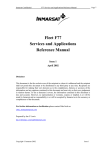
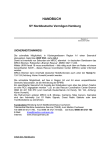
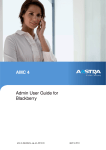
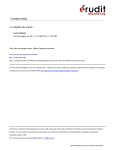
![manual [doc]](http://vs1.manualzilla.com/store/data/006772538_1-1c287c55cb09ceba98cdeeb675cd0306-150x150.png)
